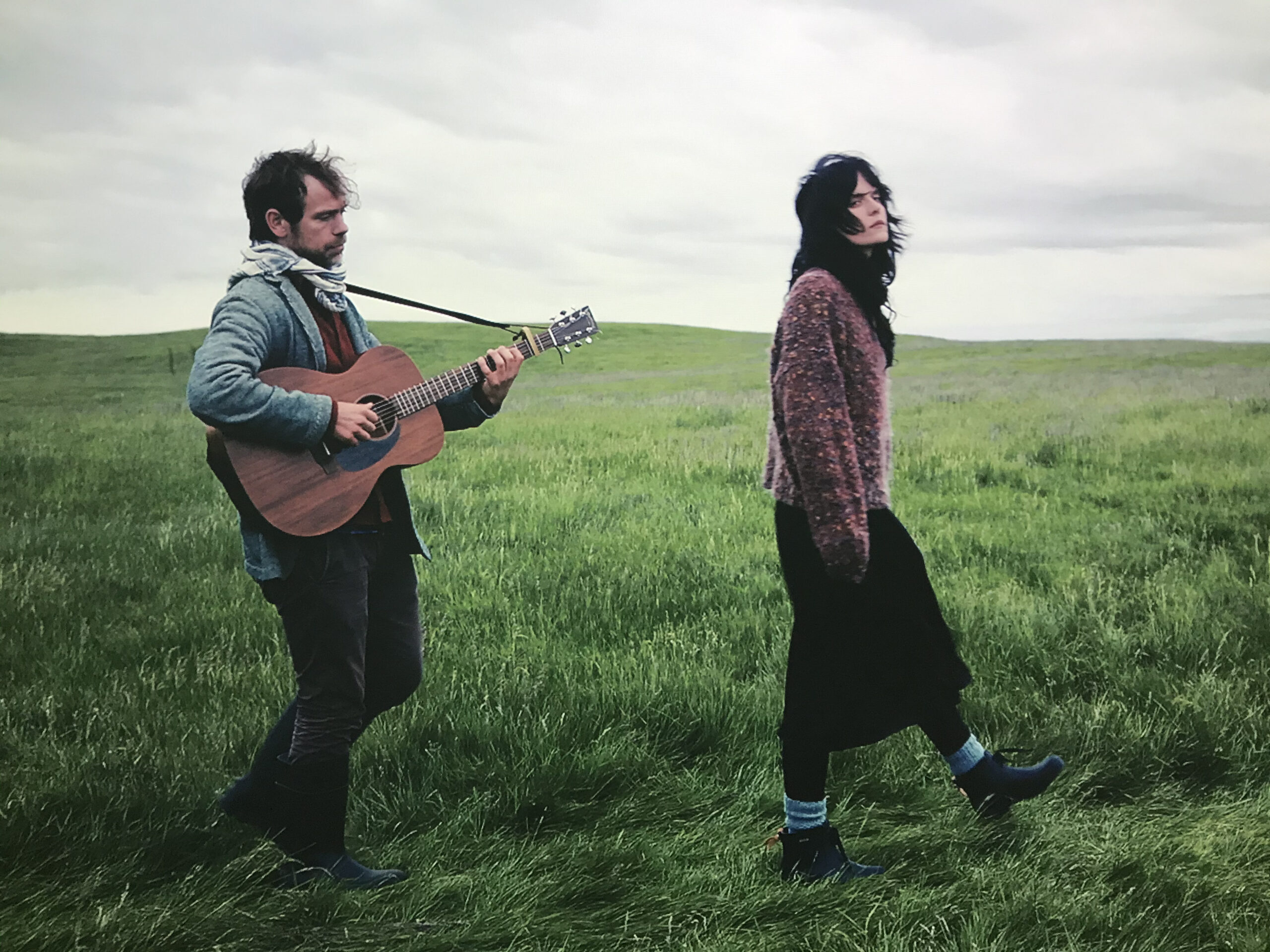Montrealers can experience Iceland’s endless summer days in a captivating exhibit by Ragnar Kjartansson
Sumarnótt, meaning “summer night” in Icelandic, is the name of Ragnar Kjartansson’s new art installation. In a 77-minute music video, the artist captures a long summer night in Iceland, where the sky never goes dark. To create this piece, he partnered with American band The National and Icelandic band múm. The Montreal Museum of Fine Arts will host the exhibit until Jan. 2, 2022.
Early Thursday morning, I was the first to visit the installation. For 10 minutes, I stood alone amidst a circle of seven floor-to-ceiling screens. The room was dark, but the screens shone bright, showcasing expansive plains and grey skies.
The video featured two sets of twins dressed in wool sweaters, long skirts, and light scarves. They walked from screen to screen, singing, “by the stream, my love,” “in the dark, my love,” and “death is elsewhere.” I caught myself spinning in unison with the twins. Their hair was unbrushed, and the women wore no makeup. They seemed comfortable in the plains, as if they played music there every night.
While I stood in that dark room, I imagined long grass brushing against my shins. I also envisioned a sharp wind blowing against my face. The singers worshipped where I stood. For the length of the performance, I felt like I was an idol at the centre of a spiritual ritual. I transcended into something bigger than myself, something worth reverence and contemplation.
The song, a blend of acoustic guitar and soft harmonies, put me in a trance. It invited me to lay down in the grass and close my eyes. The setting is peaceful and beautiful. However, it morphed into something different. It made me aware of my impermanence.
The singers embraced each other, and they sometimes held each other’s gazes. Once in a while, they stopped to look through the camera and into the dark room where I stood. In their eyes I saw a reflection of my fears and worries. I saw the human condition we all share — mortality.
To emphasize human triviality, Kjartansson gives the grassland more screen time than the performers. He also trivializes the topics they sing about. They sing about death, but the wind continues to blow, and the clouds still move in the sky. Human life and worries are set against a backdrop of a never-ending horizon. The setting is constant and devoid of feeling.
At first, this juxtaposition inundated me with angst. I, the person who stood in the middle of this landscape, was insignificant. But as the singers circled around me, again and again, I started to see the beauty in my temporality. I was suddenly a part of nature. So, I relinquished my worries about what nature had in store for me. Like the twins’ song, for a moment, I chose to believe that love is the continuation of life after death. Love is “in the dark.”
Photograph by Hannah Sabourin
